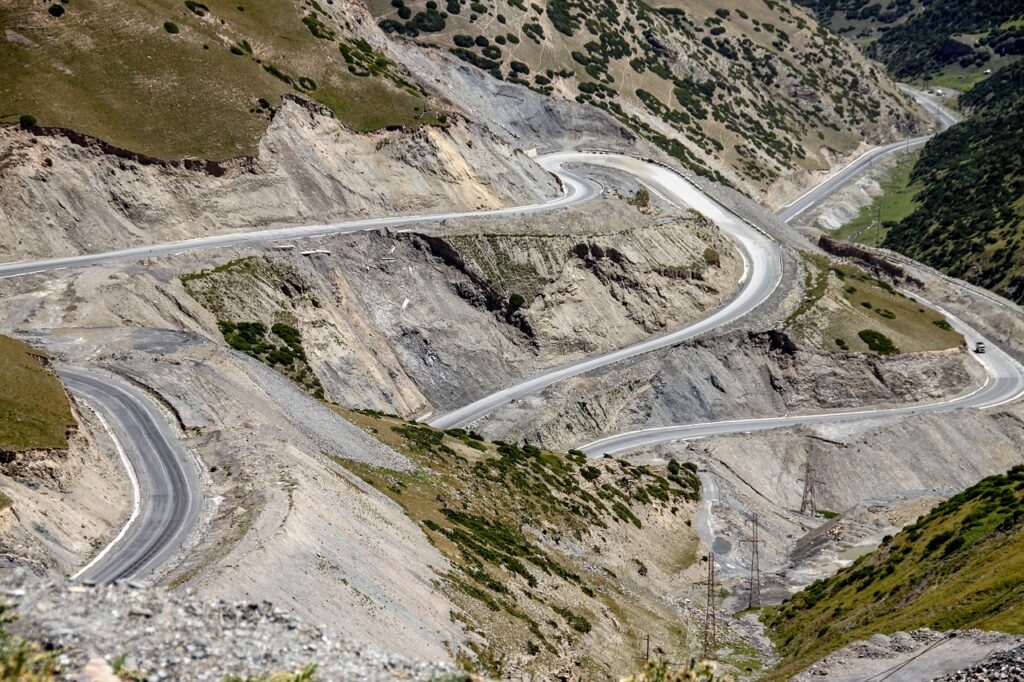Himalayan Mountain Range: (A Journey to the Roof of the World)
The Himalayan mountain range is one of the most awe-inspiring natural wonders on Earth. Stretching across five countries—India, Nepal, Bhutan, China, and Pakistan—the Himalayas are a symbol of nature’s grandeur and mystery. With towering peaks, deep valleys, and diverse ecosystems, the Himalayas are a place of adventure, spirituality, and cultural richness.

Himalayan Mountain Range :The Highest Mountains on Earth
The Himalayas are home to the highest mountains in the world, including the legendary Mount Everest. At 8,848 meters (29,029 feet), Everest is the tallest peak on the planet. Climbers from around the world come to test their skills and endurance on this mighty mountain. But Everest is not alone. The Himalayas boast other towering peaks like K2, Kanchenjunga, Lhotse, and Makalu, each with its own challenges and beauty.
The Himalayas were formed millions of years ago when the Indian subcontinent collided with the Eurasian plate. This collision created the world’s youngest and highest mountain range. Even today, the Himalayas continue to rise as the tectonic plates shift beneath them.
A Land of Diverse Landscapes
The Himalayas are more than just mountains. They are a region of incredible natural diversity. From the snow-covered peaks to the lush green valleys, the Himalayas offer a variety of landscapes that are home to unique plants and animals.
In the higher altitudes, you will find glaciers, ice fields, and snow-capped peaks that remain frozen year-round. These glaciers are the source of many major rivers in Asia, including the Ganges, Yamuna, Brahmaputra, and Indus. As you move lower, the landscape changes dramatically. Dense forests filled with rhododendrons, pines, and oaks cover the slopes. These forests are home to a variety of wildlife, including the elusive snow leopard, the red panda, and numerous species of birds.
The valleys of the Himalayas are fertile and lush, with terraced fields where locals grow crops like rice, wheat, and barley. Rivers and streams flow through these valleys, providing water for agriculture and sustaining life in the region.
Cultural Richness and Spiritual Significance
The Himalayas are not only a natural wonder but also a cultural and spiritual hub. The people who live in the Himalayan region have developed unique cultures and traditions that are closely tied to the mountains.
In Nepal and the Indian states of Sikkim and Ladakh, the Sherpa and Tibetan communities have lived in harmony with the harsh mountain environment for centuries. They are known for their resilience, hospitality, and deep connection to the land. The Sherpas, in particular, are famous for their mountaineering skills and have guided countless climbers to the summit of Everest.
The Himalayas are also a major center of spirituality. The mountains are considered sacred in many religions, including Hinduism and Buddhism. Mount Kailash, in Tibet, is believed to be the home of Lord Shiva, a major Hindu deity. Every year, thousands of pilgrims undertake the arduous journey to this holy mountain.
Buddhism has a strong presence in the Himalayas, especially in regions like Ladakh, Sikkim, Bhutan, and Tibet. Monasteries, some perched precariously on cliffs, dot the landscape. These monasteries are not only places of worship but also centers of learning and meditation. The chanting of monks and the fluttering of prayer flags add a sense of peace and spirituality to the mountains.
Adventure and Exploration
The Himalayas are a paradise for adventurers. The rugged terrain and challenging conditions attract trekkers, climbers, and explorers from all over the world. Trekking is one of the most favourite activities in the Himalayas region. Trails like the Everest Base Camp trek, the Annapurna Circuit, and the Manaslu Circuit offer stunning views and a chance to experience the local culture.
For those seeking even more excitement, mountaineering offers the ultimate challenge. Climbing a Himalayan peak is no small feat. It requires physical strength, mental toughness, and careful planning. While Mount Everest is the most famous, other peaks like Ama Dablam, Annapurna, and Makalu also attract climbers looking for adventure.
Besides trekking and climbing, the Himalayas offer other activities like river rafting, paragliding, and skiing. The rivers that originate in the mountains provide thrilling white-water rafting experiences. The slopes of the Himalayas turn into ski resorts during the winter, attracting skiers and snowboarders.
The Himalayas and Climate Change(Himalayan Mountain Range)
The Himalayas face significant challenges due to climate change. The glaciers that feed Asia’s major rivers are melting at an alarming rate. This not only threatens the water supply for millions of people but also increases the risk of floods and landslides in the region. The changing climate is also affecting the delicate balance of the Himalayan ecosystem, putting wildlife and plant species at risk.
Efforts are being made to protect the Himalayas. Governments and environmental organizations are working to raise awareness about the impacts of climate change and promote sustainable practices. Local communities are also playing a key role in conservation efforts, recognizing the importance of preserving their environment for future generations.
Conclusion
The Himalayan mountain range is a natural wonder that inspires awe and respect. Its towering peaks, diverse landscapes, and rich cultural heritage make it a place of endless fascination. Whether you are drawn to the thrill of adventure, the tranquility of nature, or the spiritual significance of the mountains, the Himalayas have something to offer everyone.
As we continue to explore and enjoy the beauty of the Himalayas, it is crucial to remember our responsibility to protect this fragile environment. By working together, we can ensure that the Himalayas remain a symbol of nature’s majesty and a source of inspiration for generations to come.


